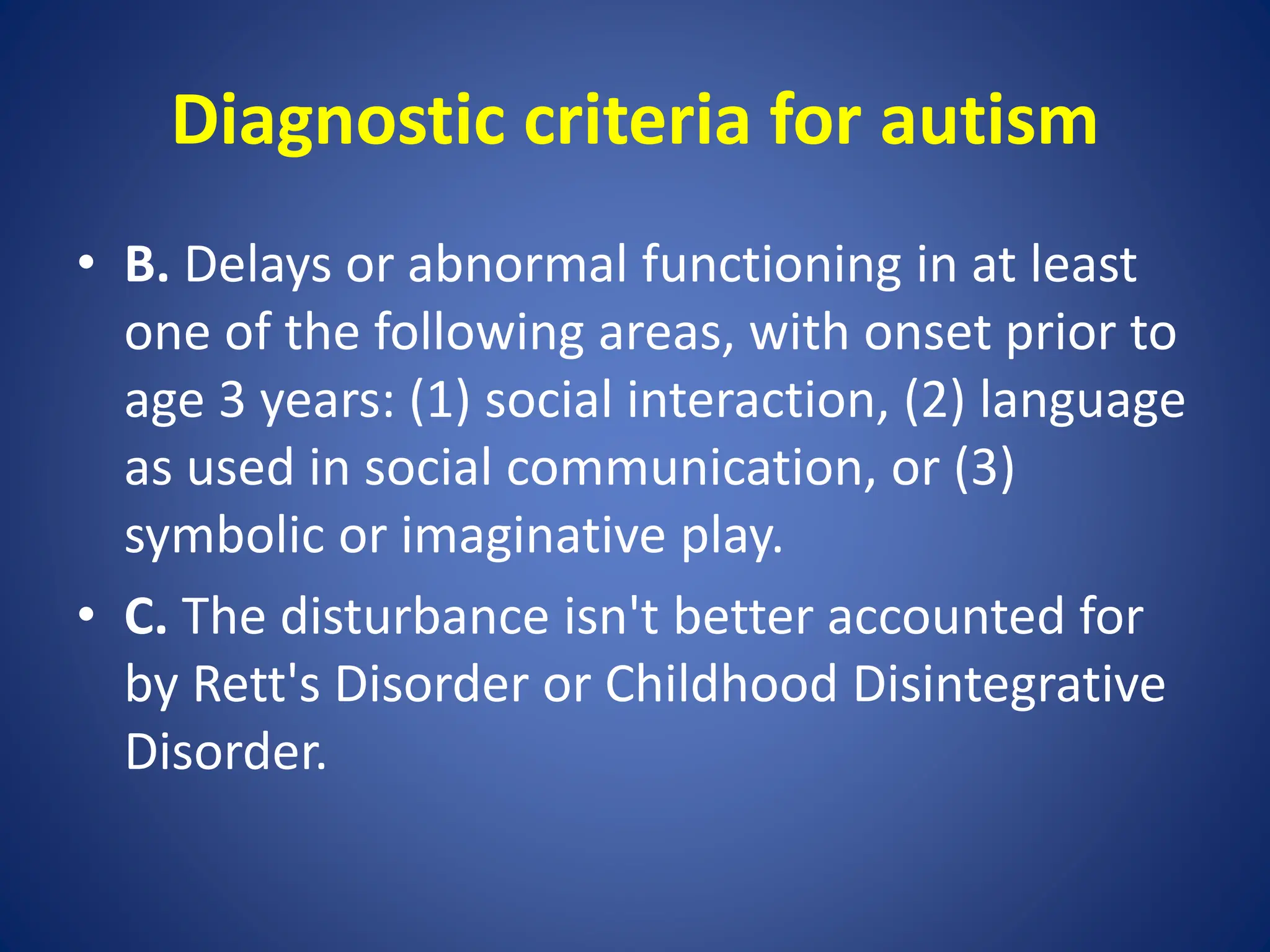Autism is a neurodevelopmental disorder that impairs social interaction and communication and causes repetitive behaviors. It is defined by difficulties in social interaction and communication across multiple contexts. Signs typically appear by age 3 and can range from mild to severe. While the specific causes are unknown, genetic and environmental factors are involved. Diagnosis involves assessing social interaction, communication, and repetitive behaviors. Treatments aim to improve functioning and may include applied behavior analysis therapy, social skills training, and medication to manage associated symptoms. Ongoing research seeks to better understand autism's causes and identify more effective interventions.







































